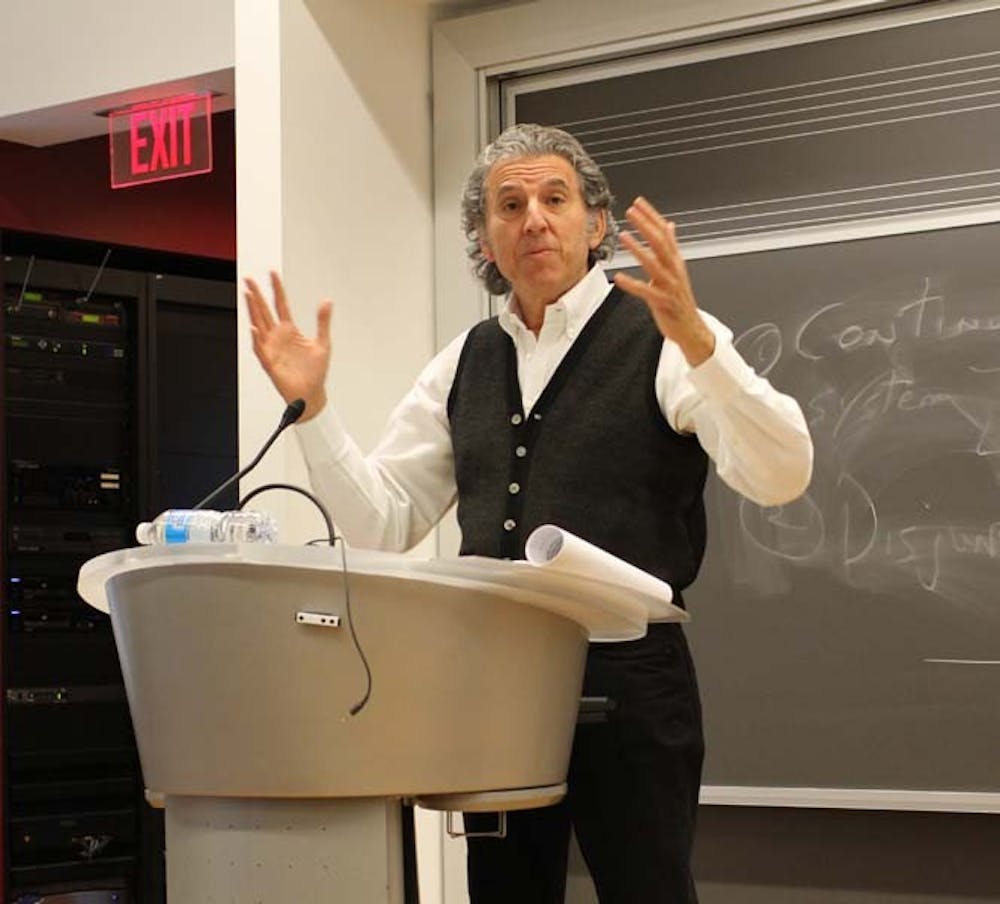Tuesday afternoon, cinema studies students got an inside look at the movie industry.
English and cinema studies professor Peter Decherney brought film producer and screenwriter Armyan Bernstein to speak to his “Hollywood Film Industry” class.
According to Decherney, his course focuses on “studying Hollywood as an industry and as a business, and the way that translates into the kinds of films that get made.” He hopes that inviting speakers from the industry will give his students an inside glimpse into the industry and pair specific stories with historic trends.
And Bernstein, he added, certainly delivered on that hope.
An avid cinephile throughout his youth, Bernstein attempted to break into Hollywood immediately after graduating from the University of Wisconsin, where he was a playwright. Working with several friends, Bernstein pitched a script to Warner Brothers in the 1970s, which an executive described as “the single worst screenplay ever written,” he said.
Following this disappointment, most of his co-writers moved on to other careers. But Bernstein couldn’t imagine doing anything but making movies.
After a brief foray into broadcast journalism, Bernstein returned to filmmaking. This time, he found success with his first produced screenplay, “One from the Heart.”
Bernstein said furthering his career was easier from that point on, explaining that “once you’re in, you’re in.” However, he remained frustrated by the control exerted by studios. With the help of a wealthy friend, Bernstein decided to make it on his own, founding an independent film company, Beacon Pictures, in 1990. Since its founding, the company has produced nearly 40 films, including “Dawn of the Dead” and “Bring It On.”
When Bernstein started producing movies, Hollywood was undergoing changes of its own, he said. The growing popularity of VHS players and television programming shifted the sources of revenue away from the domestic box office and provided new opportunities and challenges for screenwriters.
Bernstein, however, believes that these changes “only enhanced the demand for great content.” He expressed great excitement for the creative possibilities of television.
As an executive producer of the ABC crime drama “Castle,” he believes that “TV is a writer’s medium.”
This sense of optimism pervaded Bernstein’s talk. While he grounded the discussion with stories of his failures, he expressed nothing but enthusiasm for screenwriting. In particular, he wanted to make students ask themselves, “Are you ready for a long hard journey?”
“My hope is, yes, they are,” he said.
Bernstein advised his audience to go out and make a short film — if only to practice and to have something to show prospective employers. In an interview following his talk, he also said that learning the history of filmmaking is essential.
“People need to understand what has come before this moment,” he said. “What can’t be taught is where the storyteller goes from there. You can teach form but you can’t teach content.”
Courtney Cilman, a College senior in Decherney’s class, agreed that learning about both the history of Hollywood and contemporary work in the industry left her feeling better prepared to pursue a career of her own.
“You can’t really work in the industry without having a sense of where you came from,” she said. “I think the two perspectives together make us more well-rounded and more ready to actually work.”
She also appreciated Bernstein’s ultimately hopeful perspective. “It was nice to hear a positive take on it,” she said. “A lot of people just talk about how hard it is and how nobody’s going to make it.”



